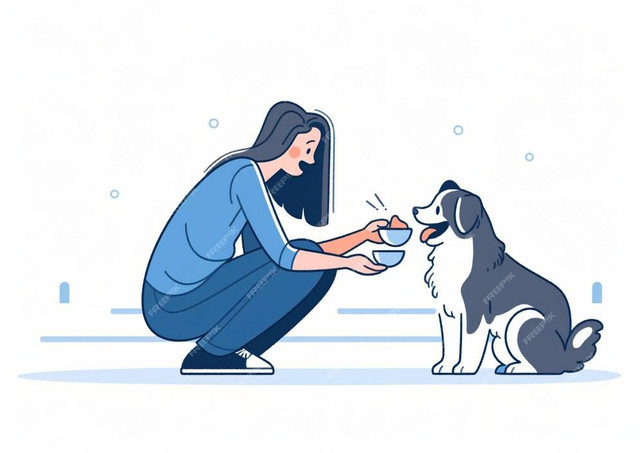Tentang KamiPedoman Media SiberKetentuan & Kebijakan PrivasiPanduan KomunitasPeringkat PenulisCara Menulis di kumparanInformasi Kerja SamaBantuanIklanKarir
2025 © PT Dynamo Media Network
Version 1.103.0
Konten dari Pengguna
Fostering Emotional Wellness: Enhancing the Pet-Owner Connection
3 Desember 2024 17:29 WIB
·
waktu baca 5 menitTulisan dari Xylia Lim tidak mewakili pandangan dari redaksi kumparan
ADVERTISEMENT

The bond between pets and their owners is a cornerstone of emotional well-being and mutual happiness. Far from being just a source of companionship, pets enrich lives, promote emotional stability, and encourage healthier lifestyles. However, cultivating this connection requires intentionality, patience, and a nuanced understanding of both the pet's and owner's needs. This essay delves into the deeper emotional dimensions of the pet-owner relationship, strategies for fostering a harmonious bond, and how empathy and communication play pivotal roles in nurturing this connection.
ADVERTISEMENT
The Emotional Impact of a Strong Pet-Owner Relationship
A strong pet-owner connection is mutually transformative. For pets, the bond fosters feelings of safety and belonging, essential for emotional health and behavioral stability. For instance, a dog that feels secure is less likely to develop stress-induced behaviors like excessive barking or destructive chewing. Similarly, a cat that experiences consistent affection and care is more likely to exhibit calm and affectionate behaviors.
On the owner's side, pets often serve as emotional anchors. They provide a sense of purpose, reduce stress, and even alleviate symptoms of anxiety and depression. The act of caring for a pet can also instill routines and foster social connections, such as meeting other pet owners during walks or at parks.
ADVERTISEMENT
Strategies for Deepening Emotional Bonds with Pets
1. Cultivate Empathy
Empathy is the foundation of any strong relationship, including those with pets. By observing and understanding a pet's cues—like a wagging tail signaling excitement or a low growl indicating discomfort—owners can respond appropriately to their emotional states. This mutual understanding strengthens trust and reduces the likelihood of stress or conflict.
2. Prioritize Quality Interaction
Spending meaningful time together is crucial. Activities like playing fetch, grooming, or simply relaxing together create positive associations. For example, setting aside daily playtime with a cat using interactive toys builds a sense of connection and mental stimulation for the pet.
3. Be Consistent in Communication
ADVERTISEMENT
Pets thrive on predictability. Using consistent cues and commands helps them understand expectations, minimizing confusion. For example, always using the same word for a command like “sit” fosters clarity, while inconsistent language can lead to frustration for both the pet and owner.
4. Offer Gentle Guidance and Encouragement
Positive reinforcement is a powerful tool for strengthening bonds. Rewarding desired behaviors with treats, praise, or affection encourages cooperation. For example, praising a dog for sitting calmly during a veterinary visit reinforces good behavior and strengthens trust.
The Role of Emotional Intelligence in Pet Care
Developing emotional intelligence as a pet owner involves understanding not only the pet’s needs but also one’s own emotional responses. Pets are perceptive and can pick up on their owner's stress, anger, or anxiety, which can impact their behavior. By managing personal emotions and maintaining a calm demeanor, owners create a reassuring environment for their pets.
ADVERTISEMENT
Precautions to Build Trust Without Fear
1. Be Patient: Especially with rescue animals, trust takes time. Avoid forcing interactions and allow the pet to adjust at its own pace. For example, sitting quietly near a shy dog can gradually help it feel safe enough to approach.
2. Respect Boundaries: Recognize that every pet has unique preferences and limits. For instance, not all cats enjoy being held, and forcing this can erode trust.
3. Monitor Emotional and Physical Health: Behavioral changes may signal underlying issues. Regular vet check-ups and observation of body language help ensure the pet’s well-being.
Practical Examples of Emotional Bonding
Reassuring a Nervous Dog: Bella, a rescue dog, exhibits fear around strangers. Her owner uses calm tones and rewarding treats during gradual introductions, teaching Bella that new encounters can be safe and positive.
ADVERTISEMENT
Creating a Safe Space for a Cat: Milo, a newly adopted cat, hides under furniture when feeling overwhelmed. The owner places a cozy bed in a quiet corner with familiar scents to help Milo acclimate to his new environment.
Engaging a High-Energy Dog: Sparky, a Labrador, displays hyperactivity without regular exercise. A structured routine of morning runs and evening play sessions helps channel his energy positively and strengthens his bond with the owner.
The pet-owner relationship is a profound, dynamic connection rooted in mutual respect, understanding, and care. By prioritizing empathy, consistent communication, and quality interaction, owners can create a nurturing environment that fosters trust and emotional well-being. This partnership, built on patience and attention to unique needs, not only enriches the pet’s life but also provides the owner with a sense of fulfillment and joy. Through intentional efforts, this bond transforms into a source of lasting happiness and emotional resilience.
ADVERTISEMENT
Reference:
1. American Veterinary Medical Association. (2024). The human-animal bond. Retrieved from https://www.avma.org. Provides insights into the mutual benefits of the pet-owner relationship.
2. McConnell, P., & Lloyd, P. (2017). The Other End of the Leash: Why We Do What We Do Around Dogs. Ballantine Books.Offers a comprehensive guide to understanding pet behavior and communication.
3. Fine, A. H., & Beck, A. M. (2019). Human-animal interactions: A social work perspective. Social Work Journal, 62(2), 123-132.Discusses the therapeutic benefits of human-animal interactions.
4. Serpell, J. A. (2019). The Domestic Dog: Its Evolution, Behavior, and Interactions with People. Cambridge University Press.Examines how dogs have adapted to form emotional bonds with humans.
5. Vitale, K. R., Behnke, A. C., & Udell, M. A. R. (2021). Attachment bonds between domestic cats and their owners. Current Biology, 31(2), 121-129.Highlights how cats also develop attachment styles similar to human bonds.
ADVERTISEMENT
6. Pet Partners. (2024). The benefits of pet ownership. Retrieved from https://www.petpartners.org. Explores the physical and emotional health advantages of having pets.
7. Overall, K. L. (2013). Manual of Clinical Behavioral Medicine for Dogs and Cats. Elsevier.Offers practical examples of addressing behavioral challenges in pets.
8. Bekoff, M. (2023). The Emotional Lives of Animals: A Leading Scientist Explores Animal Joy, Sorrow, and Empathy—and Why They Matter. New World Library.Delves into the emotional intelligence of animals and their interaction with humans.

